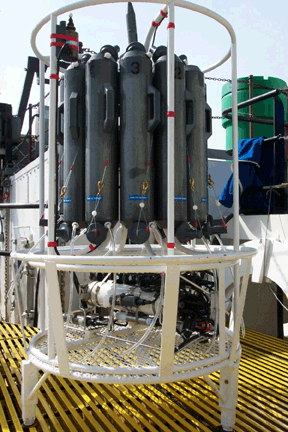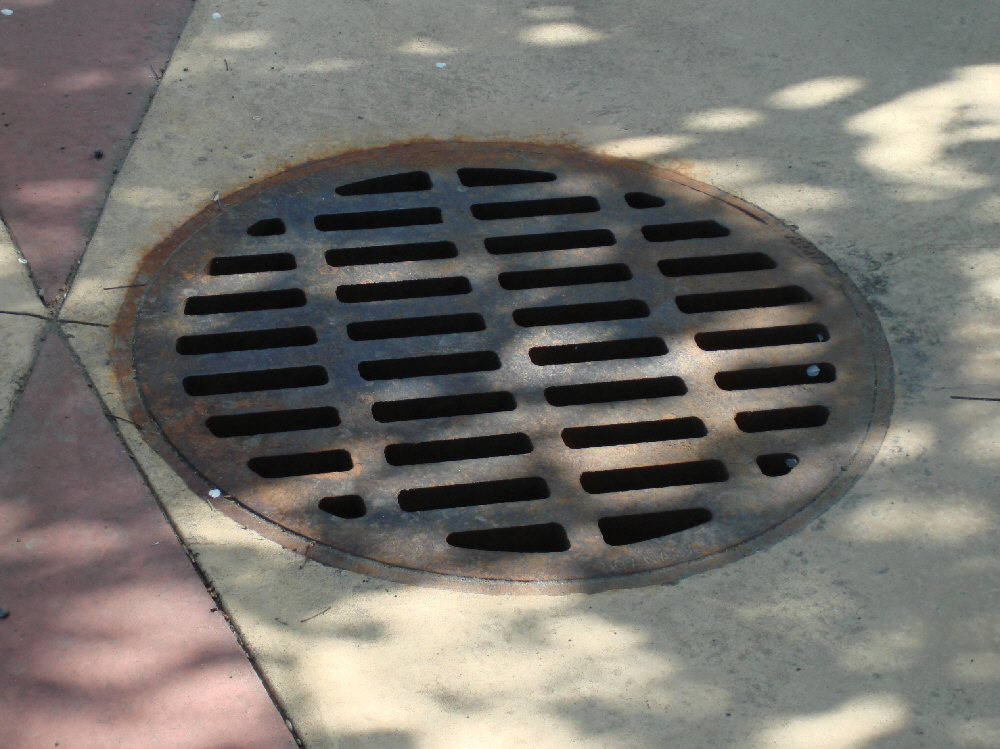|
Bread And Cheese Creek
Bread and Cheese Creek is a tributary of the Back River in Baltimore County, Maryland. The creek is long,U.S. Geological Survey. National Hydrography Dataset high-resolution flowline dataThe National Map, accessed April 1, 2011 with headwaters just east of the Baltimore city line. It flows east through Baltimore County before emptying into the Back River, which flows into the Chesapeake Bay. The watershed area of the creek is .Baltimore County Department of Environmental Protection and Resource Management (DEPRM), Towson, MD (2010)"Tidal Back River Small Watershed Action Plan."February 2010. History The name Bread and Cheese Creek dates to colonial times and is of unknown origin. Local legend, however, maintains that it derived its name during the Battle of North Point during the War of 1812. The tradition is that the stream was a popular resting spot for soldiers to eat their rations, which often consisted of hardtack (bread) and cheese. Brigadier General John Stricker and his ... [...More Info...] [...Related Items...] OR: [Wikipedia] [Google] [Baidu] |
Back River (Maryland)
Back River is a tidal estuary in Baltimore County, Maryland, located about east of the city of Baltimore. The estuary extends from Essex, Maryland, southeast for about U.S. Geological Survey. National Hydrography Dataset high-resolution flowline dataThe National Map, accessed April 1, 2011 to the Chesapeake Bay. The watershed area is and includes Essex Skypark Airport and the Back River Wastewater Treatment Plant.Maryland Department of the Environment (MDE). Baltimore, MD (2005)"Total Maximum Daily Loads of Nitrogen and Phosphorus for Back River in Baltimore City and Baltimore County, Maryland." The river is shared between Essex, MD, Dundalk, MD, and Edgemere, MD Water quality Back River is in a highly urbanized area and is subject to extensive urban runoff and other forms of water pollution. The Maryland Department of the Environment has listed water quality impairments in the mainstem river for chlordane (a pesticide), and nutrients (nitrogen and phosphorus). The Herr ... [...More Info...] [...Related Items...] OR: [Wikipedia] [Google] [Baidu] |
Merritt Boulevard
The following are major and notable roads in Baltimore County, Maryland. A B C D E F G H I J K L M N O P R S T W Y See also * List of streets in Baltimore, Maryland References {{DEFAULTSORT:List Of Roads In Baltimore County, Maryland Roads in Baltimore County, Maryland Baltimore County Baltimore County ( , locally: or ) is the third-most populous county in the U.S. state of Maryland and is part of the Baltimore metropolitan area. Baltimore County (which partially surrounds, though does not include, the independent City of ... Baltimore-related lists ... [...More Info...] [...Related Items...] OR: [Wikipedia] [Google] [Baidu] |
Bodies Of Water Of Baltimore
Bodies may refer to: * The plural of body * ''Bodies'' (2004 TV series), BBC television programme * Bodies (upcoming TV series), an upcoming British crime thriller limited series * "Bodies" (''Law & Order''), 2003 episode of ''Law & Order'' * Bodies: The Exhibition, exhibit showcasing dissected human bodies in cities across the globe * ''Bodies'' (novel), 2002 novel by Jed Mercurio * ''Bodies'', 1977 play by James Saunders (playwright) * ''Bodies'', 2009 book by British psychoanalyst Susie Orbach Music * ''Bodies'' (album), a 2021 album by AFI * ''Bodies'' (EP), a 2014 EP by Celia Pavey * "Bodies" (Drowning Pool song), 2001 hard rock song by Drowning Pool * "Bodies" (Sex Pistols song), 1977 punk rock song by the Sex Pistols * "Bodies" (Little Birdy song), 2007 indie rock song by Little Birdy * "Bodies" (Robbie Williams song), 2009 pop song by Robbie Williams * "Bodies", a song by Megadeth from ''Endgame'' * "Bodies", a song by The Smashing Pumpkins from ''Mellon Collie an ... [...More Info...] [...Related Items...] OR: [Wikipedia] [Google] [Baidu] |
List Of Rivers Of Maryland
List of rivers of Maryland (U.S. state). The list is arranged by drainage basin from east to west, with respective tributaries indented under each larger stream's name and ordered from downstream to upstream. By drainage basin Delaware River *Christina River Atlantic Ocean *Ayres Creek *Greys Creek *St. Martin River * Turville Creek *Trappe Creek Chesapeake Bay Eastern Shore * Pocomoke River ** Dividing Creek **Nassawango Creek * Little Annemessex River *Big Annemessex River * Manokin River * Monie Creek * Wicomico River ** Beaverdam Creek *Nanticoke River **Barren Creek *** Mockingbird Creek ** Marshyhope Creek ***Big Creek ***Stony Bar Creek ***Krafts Creek *** Spears Creek ***Becky Taylor Branch *** Mill Branch *** Mill Creek ***Puckum Branch *** Wrights Branch *** Skinners Run *** Davis Millpond Branch ****North Davis Millpond Branch ****South Davis Millpond Branch *** Miles Branch *** Tanyard Branch *** Faulkner Branch ***Tull Branch *** Sullivan Branch **** Raccoon Bra ... [...More Info...] [...Related Items...] OR: [Wikipedia] [Google] [Baidu] |
Water Quality
Water quality refers to the chemical, physical, and biological characteristics of water based on the standards of its usage. It is most frequently used by reference to a set of standards against which compliance, generally achieved through treatment of the water, can be assessed. The most common standards used to monitor and assess water quality convey the health of ecosystems, safety of human contact, extend of water pollution and condition of drinking water. Water quality has a significant impact on water supply and oftentimes determines supply options. Categories The parameters for water quality are determined by the intended use. Work in the area of water quality tends to be focused on water that is treated for potability, industrial/domestic use, or restoration (of an environment/ecosystem, generally for health of human/aquatic life). Human consumption Contaminants that may be in untreated water include microorganisms such as viruses, protozoa and bacteria ... [...More Info...] [...Related Items...] OR: [Wikipedia] [Google] [Baidu] |
Street Sweeping
A street sweeper or street cleaner may refer to a person's occupation or to a machine that cleans streets. Street sweepers have been employed in cities as "sanitation workers" since sanitation and waste removal became a priority. A street-sweeping person would use a broom and shovel to clean off litter, animal waste and filth that accumulated on streets. Later, water hoses were used to wash the streets. Machines were created in the 19th century to do the job more efficiently. Today, modern street sweepers are mounted on truck bodies and can vacuum debris that accumulates in streets. Modern sweepers Street sweepers are capable of collecting small particles of debris. Many street sweepers produced today are PM10 and PM2.5 certified, meaning that they are capable of collecting and holding particulate matter sized less than 10μm and even down to 2.5μm. Despite advancements in street sweeping technology, the mechanical broom type street sweeper accounts for approximate ... [...More Info...] [...Related Items...] OR: [Wikipedia] [Google] [Baidu] |
Alley
An alley or alleyway is a narrow lane, path, or passageway, often reserved for pedestrians, which usually runs between, behind, or within buildings in the older parts of towns and cities. It is also a rear access or service road ( back lane), or a path, walk, or avenue (French allée) in a park or garden. A covered alley or passageway, often with shops, may be called an arcade. The origin of the word alley is late Middle English, from fro, alee "walking or passage", from ' "to go", from la, ambulare "to walk". Definition The word alley is used in two main ways: # It can refer to a narrow, usually paved, pedestrian path, often between the walls of buildings in towns and cities. This type is usually short and straight, and on steep ground can consist partially or entirely of steps. # It also describes a very narrow, urban street, or lane, usually paved, which may be used by slow-moving local traffic, though more pedestrian-friendly than a regular street. There are two ... [...More Info...] [...Related Items...] OR: [Wikipedia] [Google] [Baidu] |
Riparian Buffer
A riparian buffer or stream buffer is a vegetated area (a " buffer strip") near a stream, usually forested, which helps shade and partially protect the stream from the impact of adjacent land uses. It plays a key role in increasing water quality in associated streams, rivers, and lakes, thus providing environmental benefits. With the decline of many aquatic ecosystems due to agriculture, riparian buffers have become a very common conservation practice aimed at increasing water quality and reducing pollution. Benefits Riparian buffers act to intercept sediment, nutrients, pesticides, and other materials in surface runoff and reduce nutrients and other pollutants in shallow subsurface water flow. They also serve to provide habitat and wildlife corridors in primarily agricultural areas. They can also be key in reducing erosion by providing stream bank stabilization. Large scale results have demonstrated that the expansion of riparian buffers through the deployment of planta ... [...More Info...] [...Related Items...] OR: [Wikipedia] [Google] [Baidu] |
Storm Drain
A storm drain, storm sewer (United Kingdom, U.S. and Canada), surface water drain/sewer (United Kingdom), or stormwater drain ( Australia and New Zealand) is infrastructure designed to drain excess rain and ground water from impervious surfaces such as paved streets, car parks, parking lots, footpaths, sidewalks, and roofs. Storm drains vary in design from small residential dry wells to large municipal systems. Drains receive water from street gutters on most motorways, freeways and other busy roads, as well as towns in areas with heavy rainfall that leads to flooding, and coastal towns with regular storms. Even gutters from houses and buildings can connect to the storm drain. Many storm drainage systems are gravity sewers that drain untreated storm water into rivers or streams—so it is unacceptable to pour hazardous substances into the drains. Storm drains sometimes cannot manage the quantity of rain that falls in heavy rains or storms. Inundated drains can cause ba ... [...More Info...] [...Related Items...] OR: [Wikipedia] [Google] [Baidu] |
Downspout
A downspout, waterspout, downpipe, drain spout, drainpipe, roof drain pipe,Francis Joseph Patry 1974. Roof Drain ArrangementUnited States Patent 3909412< or leader is a for carrying rainwater from a rain gutter. The purpose of a downspout is to allow water from a gutter to reach the ground without dripping or splashing down the building structure. Downspouts are usually vertical and usually extend down to ground level, although may be routed at an angle to avoid architectural features and may discharge onto an intermediate roof. At the bottom of downspout there ... [...More Info...] [...Related Items...] OR: [Wikipedia] [Google] [Baidu] |
Urban Runoff
Urban runoff is surface runoff of rainwater, landscape irrigation, and car washing created by urbanization. Impervious surfaces (roads, parking lots and sidewalks) are constructed during land development. During rain , storms and other precipitation events, these surfaces (built from materials such as asphalt and concrete), along with rooftops, carry polluted stormwater to storm drains, instead of allowing the water to percolate through soil. This causes lowering of the water table (because groundwater recharge is lessened) and flooding since the amount of water that remains on the surface is greater.Water Environment Federation Alexandria, VA; an American Society of Civil Engineers Reston, VA [...More Info...] [...Related Items...] OR: [Wikipedia] [Google] [Baidu] |
Stormwater
Stormwater, also spelled storm water, is water that originates from precipitation (storm), including heavy rain and meltwater from hail and snow. Stormwater can soak into the soil ( infiltrate) and become groundwater, be stored on depressed land surface in ponds and puddles, evaporate back into the atmosphere, or contribute to surface runoff. Most runoff is conveyed directly as surface water to nearby streams, rivers or other large water bodies (wetlands, lakes and oceans) without treatment. In natural landscapes, such as forests, soil absorbs much of the stormwater. Plants also reduce stormwater by improving infiltration, intercepting precipitation as it falls, and by taking up water through their roots. In developed environments, such as cities, unmanaged stormwater can create two major issues: one related to the volume and timing of runoff (flooding) and the other related to potential contaminants the water is carrying (water pollution). In addition to the pollutants carri ... [...More Info...] [...Related Items...] OR: [Wikipedia] [Google] [Baidu] |



.jpg)


